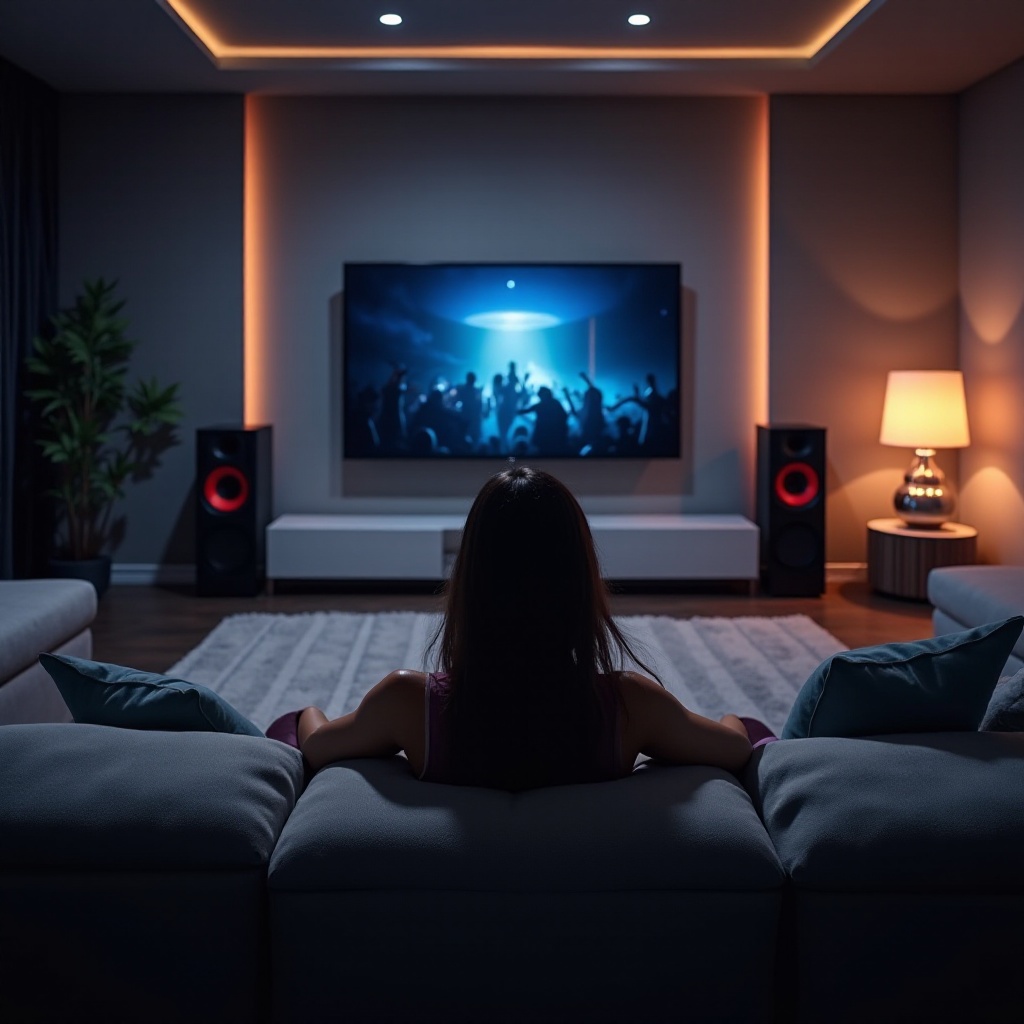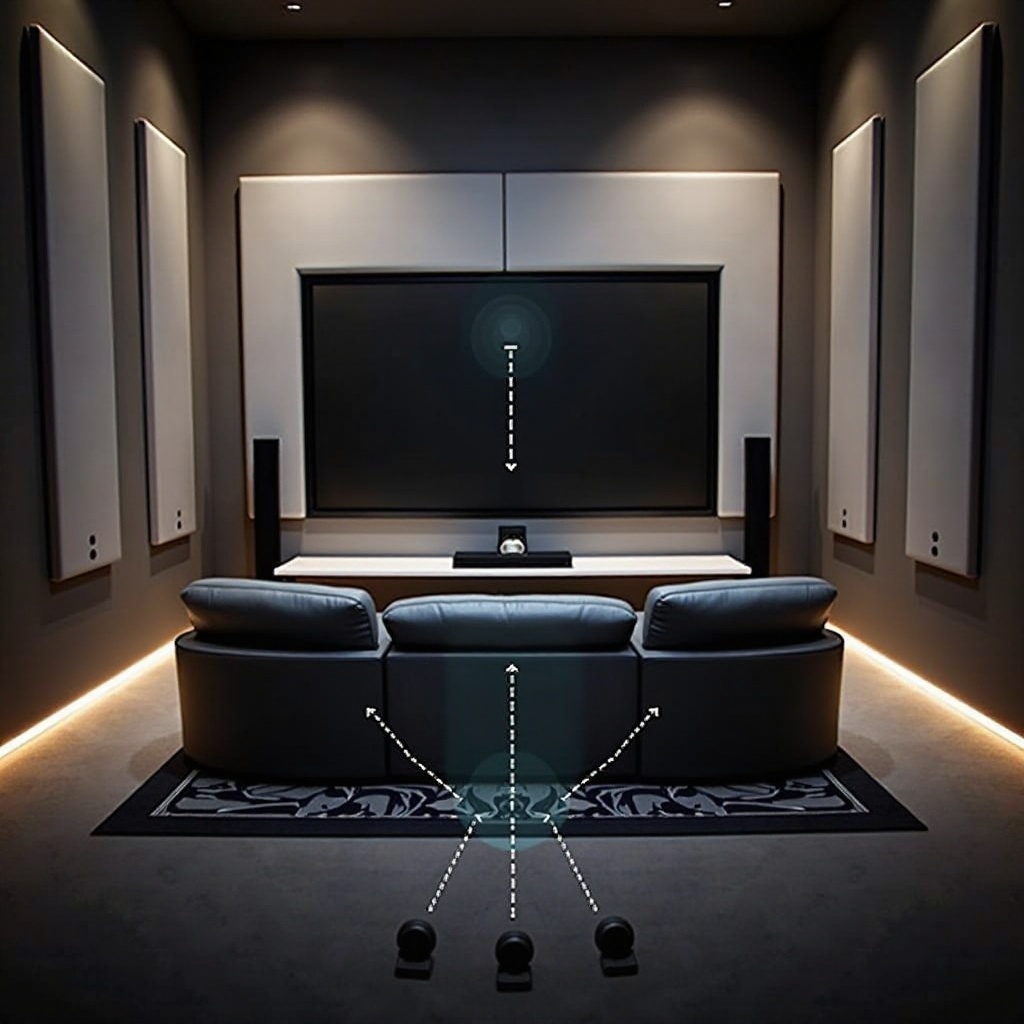Optimal Surround Sound Speaker Placement Guide for Home Theaters
Introduction
Creating the ultimate home theater experience revolves significantly around the placement of your surround sound speakers. Whether you’re a movie aficionado or a gaming enthusiast, having proper speaker placement can mean the difference between good audio and a fantastic, immersive experience.
Correctly positioning your surround sound speakers will ensure that every sound detail is captured, enhancing your viewing pleasure. This guide will help you understand the essentials of placing your surround sound speakers for any room size, the tools you’ll need, and tips to elevate your home theater to new heights. Now, let’s explore how various factors contribute to the placement of surround sound speakers.

Understanding Surround Sound Systems
What Is Surround Sound?
Surround sound technology immerses an individual in auditory experiences by using multiple audio channels. Unlike a traditional two-speaker setup, surround sound systems utilize five or more speakers to create a 360-degree sound field. This setup ensures you experience sound from all directions, replicating the experience of being present in the scene.
Components of a Surround Sound System
A typical surround sound system includes:
- Front Left and Right Speakers
- Center Speaker
- Surround Left and Right Speakers
- Subwoofer
These components work together to deliver a full range of audio, from delicate whispers to powerful explosions, enveloping you in rich, dynamic sound.
5.1 vs 7.1 Surround Sound Systems
When setting up your home theater, you might encounter two common configurations: 5.1 and 7.1 systems.
- 5.1 System: Includes five speakers (front left, front right, center, surround left, surround right) and one subwoofer.
- 7.1 System: Adds two additional surround speakers (rear left and rear right), providing more detailed and immersive surround sound.
Understanding these systems is key to placing your speakers correctly for the best audio performance.

Ideal Speaker Placement for Different Room Types
No two rooms are alike. The size and layout of your room influence how you should place your surround sound speakers.
Small Rooms
In smaller rooms, space is often at a premium. Positioning the speakers close to the walls can increase bass response and minimize sound diffusion. Ensure the front and surround speakers are angled toward the primary listening position to maximize sound clarity.
Medium Rooms
Medium-sized rooms offer more flexibility. Place the front speakers at ear level, slightly wider than your TV, and angle them toward your seating area. The surround speakers should be positioned to the sides and slightly above ear level to fully encompass the room with sound.
Large Rooms
In larger rooms, maintaining audio clarity becomes more challenging. Spread the speakers evenly throughout the room and utilize speaker stands or wall mounts to ensure they are at ear level. Surround speakers should be positioned even further behind the listening area to create a more immersive auditory experience.
Open-Plan Spaces
For open-plan living areas, defining the listening space is essential. Consider using area rugs and furniture placements to direct the sound. Ceiling-mounted or wall-mounted speakers might be necessary to cover the larger, undefined spaces effectively.
Step-by-Step Speaker Placement Guide
Understanding baseline principles is only the beginning. Here’s a step-by-step guide to placing your speakers accurately.
Finding the Sweet Spot (Primary Listening Position)
- Identify the central seating area: Your ‘sweet spot’ should be where you’ll spend the most time watching or listening.
- Measure the distance: Measure the distance from the primary listening position to different parts of the room to ensure even speaker placement.
Front Speaker Placement
- Position the center speaker: Place the center speaker above or below your TV but close to ear level and directly in line with the screen.
- Angle the front left and right speakers: Position these speakers on either side of the TV at ear level. They should form a 45-degree angle with the primary listening position.
Surround Speaker Placement
- Position surround speakers: Place the surround left and right speakers to the sides or slightly behind the primary listening position, above ear level.
- Ensure optimal distance: The exact distance can vary based on your room, but generally, they should be about 3-4 feet off the ground in smaller rooms and higher in larger spaces.

Tips and Tricks for Perfect Sound
Even with the right placement, optimizing your setup can elevate your sound experience.
Using a Sound Meter
A sound meter helps you measure and adjust the sound levels for each speaker, ensuring balanced audio output throughout the room.
Calibrating Your System
Most modern receivers come with built-in calibration tools. Use these tools to fine-tune your system, correcting minor discrepancies in speaker output and positioning.
Avoiding Common Mistakes
- Avoid placing speakers inside cabinets or behind objects.
- Don’t forget about the subwoofer placement: it should have room to resonate without rattling nearby items.
Advanced Placement Strategies for Audiophiles
To fully embrace high-end audio setups, consider these advanced strategies.
Placement for Dolby Atmos or DTS:X Systems
For 3D audio systems like Dolby Atmos or DTS:X, ceiling-mounted speakers add a height dimension to your sound. Proper vertical positioning immerses you further into the auditory experience.
Bi-polar and Di-polar Speaker Placement
Bi-polar and di-polar speakers diffuse sound differently. Position these speakers directly to the sides of the listening area to maximize their distinct dispersion patterns.
Dealing with Furniture and Obstacles
Large furniture can obstruct sound waves, impacting audio quality. Arrange your furniture to avoid blocking speaker pathways, and elevate speakers when necessary to ensure an unobstructed sound flow.
Conclusion
The correct placement of surround sound speakers can significantly enhance your home theater experience. Each room type and speaker system may require different positioning techniques for optimal sound quality. By following these guidelines, you can create an immersive sound environment tailored to your unique space.
Frequently Asked Questions
What is the best placement for 5.1 surround sound speakers?
For 5.1 surround sound systems, the front left, center, and right speakers should be positioned at ear level, with the surround speakers placed slightly behind and above the listening area.
How high should surround sound speakers be placed?
Surround sound speakers should be placed at ear level, generally around 3-4 feet above the ground, depending on the room size and seating arrangement.
Do I need to calibrate my surround sound speakers?
Yes, calibrating your surround sound speakers ensures balanced audio output and optimal performance by adjusting each speaker to suit your room’s acoustics and layout.
